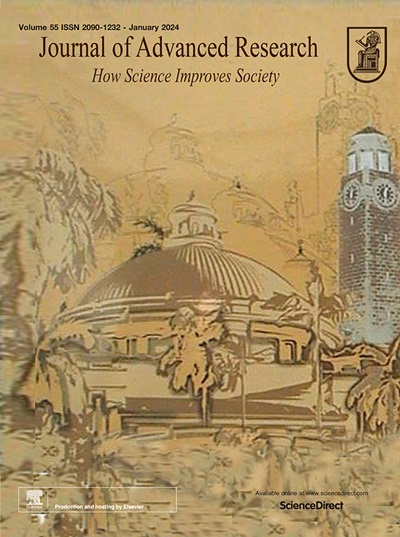AML细胞耐药的动态异质性主要是由多组学分析揭示的表观基因组机制驱动的
IF 11.4
1区 综合性期刊
Q1 MULTIDISCIPLINARY SCIENCES
引用次数: 0
摘要
急性髓系白血病(AML)是一种以侵袭性增殖和化疗耐药为特征的血液系统恶性肿瘤,导致患者预后不良。尽管化疗取得了进展,但耐药机制仍未得到充分了解,特别是在细胞和分子水平上。目的探讨AML细胞耐药的细胞和分子机制。方法采用多组学方法,整合单细胞RNA测序(scRNA-seq)、染色质可及性分析(scATAC-seq)、DNA甲基化分析和全外显子组测序(WES)。AML细胞系(KG-1a、Kasumi-1和HL-60)用标准化疗药物治疗,包括阿糖胞苷(Ara-C)、柔红霉素(DNR)、阿扎胞苷(AZA)和地西他滨(DEC)。此外,我们开发了一种新的多路scRNA-seq策略,NAMUL-seq,以提高单细胞转录组研究的效率和可扩展性。结果:我们在不同治疗的AML细胞中观察到大量的细胞异质性和动态转录组学轨迹,揭示了向更像干细胞的状态重编程的趋势。值得注意的是,耐ara - c的KG-1a细胞主要来自G2/M期亚群,这表明耐药机制与特定的细胞周期阶段有关。我们的研究结果进一步表明,快速的Ara-C耐药主要是由表观基因组变化驱动的,包括DNA甲基化、染色质结构和转录因子活性的改变,而外显子突变起的作用很小。结论AML耐药主要由表观基因组机制驱动,而非基因突变。该研究提供了AML药物反应和耐药的详细细胞和分子特征,确定了潜在的治疗靶点,并为未来克服化疗耐药奠定了基础。本文章由计算机程序翻译,如有差异,请以英文原文为准。

Dynamic heterogeneity towards drug resistance in AML cells is primarily driven by epigenomic mechanism unveiled by multi-omics analysis
Introduction
Acute myeloid leukemia (AML) is a hematologic malignancy characterized by aggressive proliferation and chemoresistance, leading to poor patient outcomes. Despite advances in chemotherapy, resistance mechanisms remain inadequately understood, particularly at the cellular and molecular level.Objectives
This study aims to elucidate the cellular and molecular mechanisms underlying drug resistance in AML cells.Methods
A multi-omics approach was employed, integrating single-cell RNA sequencing (scRNA-seq), chromatin accessibility profiling (scATAC-seq), DNA methylation analysis, and whole-exome sequencing (WES). AML cell lines (KG-1a, Kasumi-1, and HL-60) were treated with standard chemotherapeutic agents, including cytarabine (Ara-C), daunorubicin (DNR), azacitidine (AZA), and decitabine (DEC). Additionally, we developed a novel multiplexed scRNA-seq strategy, NAMUL-seq, to enhance the efficiency and scalability of single-cell transcriptomic research.Results
We observed substantial cellular heterogeneity and dynamic transcriptomic trajectories in AML cells subjected to various treatments, uncovering a tendency for reprogramming towards a more stem-like state. Notably, Ara-C-resistant KG-1a cells predominantly originated from G2/M phase subpopulations, suggesting a resistance mechanism linked to specific cell cycle stages. Our findings further indicate that rapid Ara-C resistance is primarily driven by epigenomic changes, including alterations in DNA methylation, chromatin architecture, and transcription factor activity, whereas exonic mutations played a minimal role.Conclusion
This study demonstrates that AML drug resistance is predominantly driven by epigenomic mechanisms rather than genetic mutations. This study provides a detailed cellular and molecular characterization of AML drug response and resistance, identifying potential therapeutic targets and laying the groundwork for future efforts to overcome chemoresistance.求助全文
通过发布文献求助,成功后即可免费获取论文全文。
去求助
来源期刊

Journal of Advanced Research
Multidisciplinary-Multidisciplinary
CiteScore
21.60
自引率
0.90%
发文量
280
审稿时长
12 weeks
期刊介绍:
Journal of Advanced Research (J. Adv. Res.) is an applied/natural sciences, peer-reviewed journal that focuses on interdisciplinary research. The journal aims to contribute to applied research and knowledge worldwide through the publication of original and high-quality research articles in the fields of Medicine, Pharmaceutical Sciences, Dentistry, Physical Therapy, Veterinary Medicine, and Basic and Biological Sciences.
The following abstracting and indexing services cover the Journal of Advanced Research: PubMed/Medline, Essential Science Indicators, Web of Science, Scopus, PubMed Central, PubMed, Science Citation Index Expanded, Directory of Open Access Journals (DOAJ), and INSPEC.
 求助内容:
求助内容: 应助结果提醒方式:
应助结果提醒方式:


